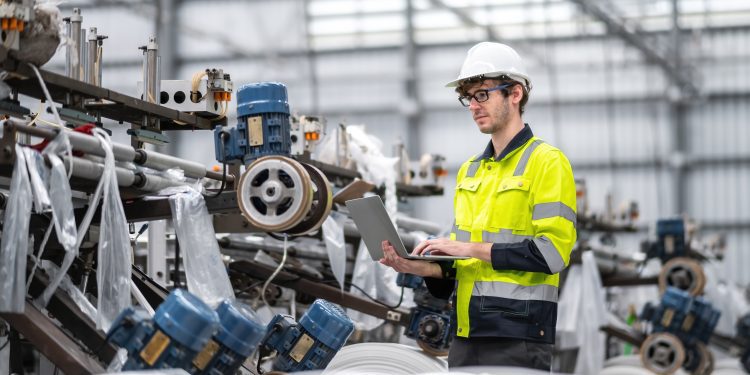If you run a manufacturing business, you know how imperative it is to make the production process as seamless as possible. The more efficient and effective production is, the more your company will benefit overall. It helps to reduce delays, minimize product defects, and maximize your expenditure. The result: your business is more successful across the board.
The problem is that an optimum production process is far from easy to achieve. There are many different aspects that require consideration, including the machinery you use, the employees you hire, and how to control inventory. Another key element is the materials you decide to use for production.
In an ideal world, you want these raw materials to be high-quality, low-cost, and perfectly suited for your manufacturing requirements. However, in most cases, some form of compromise is necessary. Cheap materials typically won’t be of a high standard or offer versatility, while high-quality materials usually come with a much higher price tag.
At least, that was the case before recent advances in polymer technology.
The Use of Polymer Technology in Production
It is hard to describe in detail just how much of a positive impact polymer has had on production. The material science field has been revolutionized by developments in polymer technology, with the substance used in everything from building materials to aircraft components and electrical engineering to waterproof coatings.
Advancements in polymer technology continue to be made. This is seen in Aquazol. This water-soluble, high-performance polymer boasts a unique structure that supplies it with additional benefits compared to other comparable polymers like PVP, PEG, and PVA. These benefits include greater stability under oxidation and temperature, precise viscosity control, and unparalleled “actives” loading capability.
Even without these continued advancements, polymer technology is able to solve a wide range of flaws that can be found during traditional production processes.
How Common Production Flaws Are Solved by Polymer Technology
When it comes to common production flaws, these usually account for quality problems, output issues, and cost concerns.
- Quality: In terms of quality, the manufacturing process can leave you with finished products of a poor standard and high defect rate. Both of these points are likely to increase the customer return rate.
- Output: If a manufacturer encounters output issues, this may cause lengthy lead times, supply chain interruptions, a high inventory rate, and production schedule that becomes unfeasible.
- Cost: A low-efficient production process has a negative impact on your costs. This is particularly the case if it leads to machines or employees being left idle during manufacturing.
These are some of the common results of flaws during the production process. However, how exactly can polymer technology assist with removing these flaws from the equation? Here are some of the key advantages gained from using polymers during production:
Design flexibility
Through the use of polymers, it is possible to gain additional design flexibility during the manufacturing process. This is because polymers supply enhanced mechanical properties alongside easier processing and efficiency.
While this design flexibility is notable for a lot of different production processes, it comes in particularly helpful for the manufacturing of smartphones. As smartphones get smaller, lighter, and more powerful, they need to incorporate materials that can match up to these designs – and that’s what polymers are capable of doing effectively.
Lightweight substance
The lightweight nature of polymers is another significant benefit in their favor. When matched up against standard metals, polymers can be up to ten times lighter. This reduction in weight can be beneficial for numerous reasons – and not just for ensuring your finished product is carrying fewer grams.
For a start, the use of lightweight substances can make your processes more sustainable. Carbon dioxide emissions are reduced, less waste ends up in landfills, and you need to consume a smaller number of natural resources. As the world pushes towards being more environmentally friendly, this can help your business meet emission targets.
Add in expended material possibilities, greater performance, and enhanced fuel efficiency, and polymers being lightweight provides a wealth of advantages.
Resistance against chemicals
A lot of common chemicals can easily attack metals. Furthermore, if moisture causes corrosion, this can lead to metal components being compromised. These points mean you have to pay careful attention during the manufacturing process.
Conversely, there is greater scope for different manufacturing approaches when working with polymers. This is because these materials are impervious and can stand up against a range of the harshest chemicals.
The result: those operating within the chemical and processing industries can utilize precision fluid handling components, the types that would dissolve if metallic materials were used for manufacturing. Additionally, it can help to improve the longevity of finished products that exist in chemically harsh environments.
A more cost-effective solution
When it comes to production flaws, they all generally tie into one aspect: cost. Mistakes will lead to your costs skyrocketing, and that leads to a whole host of issues across your company. Fortunately, the use of polymers can help to reduce your expenditure in numerous ways.
Firstly, polymer materials can be purchased at a competitive price, as they are cheaper to produce compared to metals. Their lightweight nature also means less effort is required to transport polymers, which further saves on cost. Moreover, the versatility and effectiveness of polymers help to improve the production process – and reduce the likes of defects and low efficiency – and maximize your budget.
Post-treatment finishing is not necessary
Again, there’s another advantage for polymers compared to metals: post-treatment finishing is not necessary. Polymers are electrically and thermally insulating. For metal to gain similar insulating properties, they require a secondary coating and processing.
By removing these post-treatment finishing efforts from the process, this again helps to save money. Plus, even with additional processing on metallic components, they struggle to match up with the level of insulation provided by polymer substances.
In addition, metals will often have to be painted during post-treatment. Polymers, on the other hand, usually include the desired color prior to machining.







